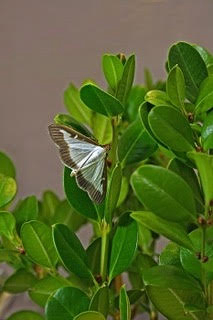MI DNR plans timber harvest in southeast Kalkaska County
Gypsy moth infestation, age and drought have contributed to trees’ deterioration
To stimulate new forest growth and remove stressed and dying trees, the Michigan Department of Natural Resources is preparing to harvest oak trees on nearly 2,000 acres of state-managed land in the southeast portion of Kalkaska County. These trees have suffered from two years of a gypsy moth infestation, drought and old age.
The DNR conducts yearly flights to monitor forest disturbances and has documented two subsequent years of severe defoliation (leaves being chewed off the tree) on many of the affected stands.
“A healthy tree can usually withstand one defoliation, but two in a row, combined with a couple of very dry summers, was just too stressful for the older, less vigorous trees to handle,” said Kelly Standerfer, a forester who works out of the Kalkaska DNR field office.
Many of these older oak-dominated stands are the result of wide-scale timbering and the uncontrolled wildfires that raged through the sandy landscape in the late 1800s and early 1900s. Oak was one of a few tree species that benefited from the fires and was able to sprout where other trees and plants once had grown. These oak stands now are susceptible to disease outbreaks like gypsy moth and two-lined chestnut borer because of their age and stand uniformity.
“We need to remove the current trees in order to stimulate new growth and remove highly hazardous trees that are susceptible to disease and windfall – making them a risk to those who are out enjoying our natural resources,” said Bill Sterrett, DNR district forest supervisor. “The DNR also wants to move quickly to salvage the wood while it is still economically valuable. We feel a closely supervised timber harvest is the best way to accomplish that.
“The challenge will be restoring these sites and providing for the next forest,” he said. “It is discouraging to see the amount of die-off, but it is a reminder that the forest is ever-changing.”
The DNR has determined that about 2,500 acres of timber have been affected. Foresters, working closely with wildlife biologists, will salvage and sell the timber from about 1,900 acres. Because oak is most likely to regenerate by stump-sprouting, some live trees also will be harvested. This will allow for more diverse, resilient stands in the future. Some areas of dead and dying oak will remain unharvested to benefit species such as bats, woodpeckers and other wildlife.
The revenue generated from the sales will be reinvested into replanting some sites, fire protection and other forest management activities.
Red pine, which can help foster the establishment of oak and other hardwoods, will be planted on at least 700 acres to give the new forest a jump-start.
“Oak is a valuable tree for wildlife, and every effort will be made to allow healthy oak to remain a part of the future forest composition,” said Steve Griffith, a DNR wildlife biologist. “Oak provides mast for white-tailed deer, grouse and turkeys, and young red pine plantations provide excellent cover for deer and small game. We are keeping the needs of Michigan hunters and wildlife viewers in mind when we are replanting these areas.”
Approximately 1,200 acres of the affected DNR-managed area are owned by the Michigan Department of Military and Veterans Affairs. Much of this land is open to public access, but also is actively used by Camp Grayling for training. DNR foresters have been working closely with Camp Grayling staff to balance military training needs with regenerating healthy forested stands.
“The good news is that the affected area is not expanding since gypsy moth and other defoliators appear to be on the decline in this area,” Sterrett said. “However, other areas may be predisposed to future decline, given the advanced age of the majority of oak in the area.”
He said the public should be aware that they will be seeing increased harvest levels in southeastern Kalkaska County over the next few years, but encouraged them also to revisit the area shortly after to see how quickly regeneration occurs.
For more information, contact the DNR Traverse City field office at 231-922-5280 or visit www.michigan.gov/forestry.
For highlights about the value of Michigan’s forest resources to residents’ everyday lives, watch this short video.
The Michigan Department of Natural Resources is committed to the conservation, protection, management, use and enjoyment of the state’s natural and cultural resources for current and future generations. For more information, go to www.michigan.gov/dnr.






